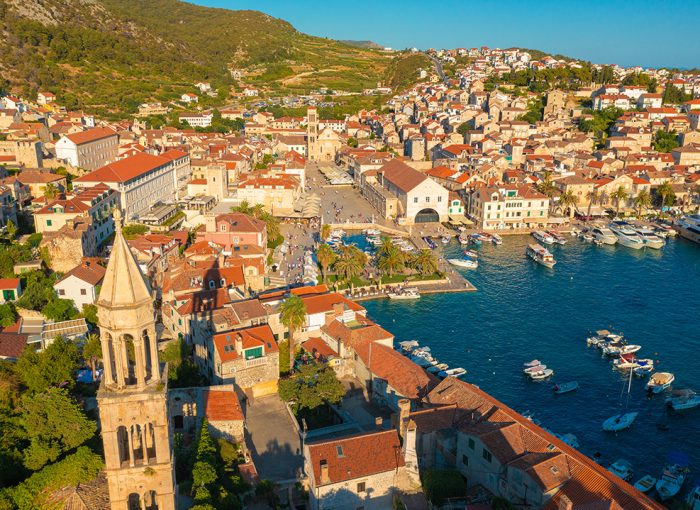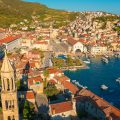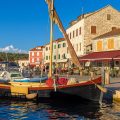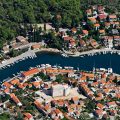With its stunning landscapes, rich history, and vibrant nightlife, Hvar Island is one of Croatia’s most coveted destinations. From ancient forts and charming towns to pristine beaches and lively islands, here are the top 10 attractions you can’t miss when visiting this Mediterranean gem.
Nestled in the azure waters of the Adriatic Sea, Hvar Island stands as a radiant jewel in Croatia’s crown. Renowned for its balmy climate and boasting an impressive 2,724 hours of sunshine annually, this Mediterranean paradise has long been a favoured destination for discerning travellers. The island’s allure lies not only in its natural beauty but also in its rich tapestry of history, culture, and gastronomy.
Hvar’s landscape is a captivating blend of rugged coastlines, secluded coves, and verdant hills dotted with ancient olive groves and fragrant lavender fields. The island’s interior reveals charming villages frozen in time, while its shores are lapped by crystal-clear waters that beckon swimmers and water sports enthusiasts alike. From the bustling Hvar Town marina to the Pakleni Islands’ tranquil bays, this Croatian gem offers a diverse array of experiences for every type of holidaymaker.
As visitors explore the island, they’ll discover a harmonious fusion of past and present. Renaissance architecture stands alongside modern boutiques and eateries, while centuries-old traditions are celebrated with contemporary flair. Whether one seeks relaxation on sun-drenched beaches, cultural immersion in historic towns, or adventure in the great outdoors, Hvar Island promises an unforgettable journey through one of Croatia’s most enchanting destinations.
Table of Contents
Hvar Town: The Heart of the Island’s Cultural Heritage
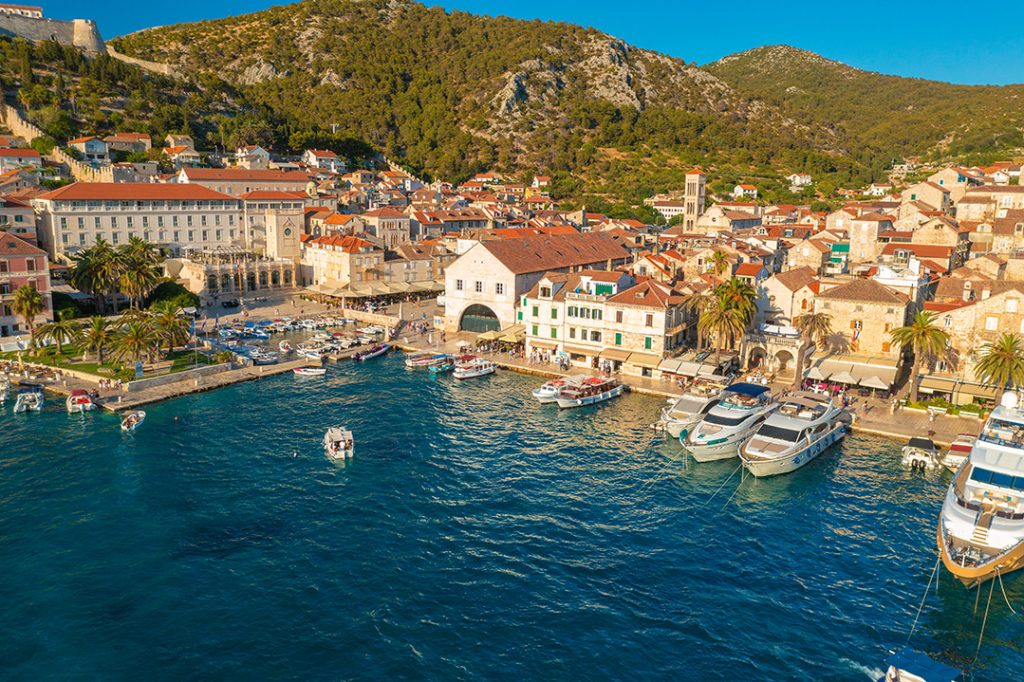
At the epicentre of Hvar’s vibrant culture lies Hvar Town, a picturesque harbour settlement that serves as the island’s main hub. This historic town is a living museum, where every cobblestone street and weathered facade tells a story of the island’s rich past. The town’s focal point is the expansive main square, Trg Svetog Stjepana, which is dominated by the impressive St. Stephen’s Cathedral and flanked by elegant Venetian-style buildings.
Visitors to Hvar Town will find themselves immersed in a world where the Renaissance period seems to have never ended. The Loggia, a remnant of the former Governor’s Palace, stands as a testament to the town’s architectural splendour. Meanwhile, the Arsenal, once a Venetian shipyard, now houses a thriving cultural centre and gallery. As night falls, the town transforms into a buzzing social scene, with its waterfront promenade coming alive with al fresco diners and revellers enjoying the balmy evening air.
For those seeking to delve deeper into Hvar’s cultural heritage, the town offers a wealth of museums and historical sites. The Franciscan Monastery, with its exquisite collection of paintings and artefacts, provides insight into the island’s religious history. The Hvar Heritage Museum, housed in a former noble palace, showcases the island’s maritime traditions and archaeological treasures. With its blend of historical significance and contemporary charm, Hvar Town encapsulates the essence of the island’s enduring appeal.
Dubovica Beach: Discover Hvar’s Coastal Paradise
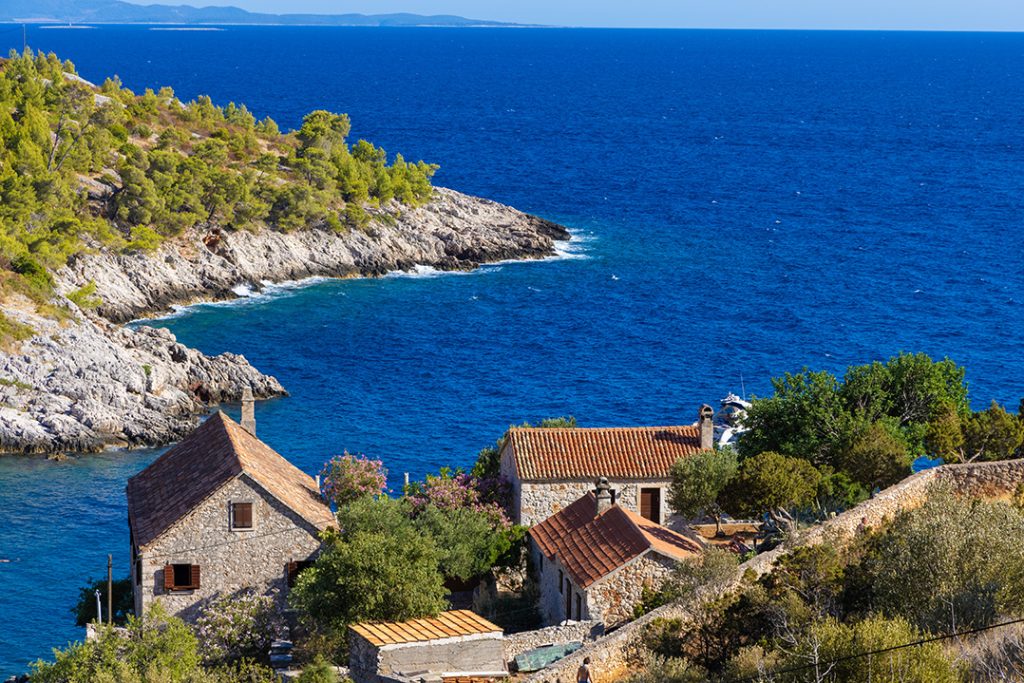
Dubovica Beach emerges as a slice of coastal heaven, tucked away along Hvar’s southern coast. This secluded pebble beach, framed by rugged cliffs and lush Mediterranean vegetation, offers visitors a tranquil escape from the island’s more bustling areas. The journey to Dubovica is an adventure in itself, with a winding path leading down to the shore, rewarding those who make the trek with breathtaking views of the Adriatic.
Upon reaching the beach, visitors are greeted by the sight of crystalline waters in various shades of blue and green. The pebbly shore gently slopes into the sea, creating ideal conditions for swimming and snorkelling. The clarity of the water allows for excellent visibility, revealing a vibrant underwater world teeming with marine life. Adventurous souls can explore the nearby sea caves or venture further out for a refreshing dip in the deeper waters.
Despite its growing popularity, Dubovica Beach maintains an air of unspoiled beauty. A charming stone house, once a fisherman’s dwelling, now serves as a rustic beach bar, offering refreshments and light meals to beachgoers. As the day progresses, the beach becomes a prime spot for watching the sun dip below the horizon, painting the sky in a spectacular array of colours. Dubovica’s natural charm and relative seclusion make it a must-visit destination for those seeking to experience Hvar’s coastal allure away from the crowds.
Lavender Fields: A Fragrant Journey Through Hvar’s Countryside
Hvar Island’s interior reveals another facet of its natural beauty in the form of its iconic lavender fields. These fragrant expanses have earned Hvar the moniker “Lavender Island” and have been an integral part of the local economy and culture for centuries. The best time to witness this aromatic spectacle is during the summer months, particularly in June and July, when the fields burst into a sea of purple blooms.
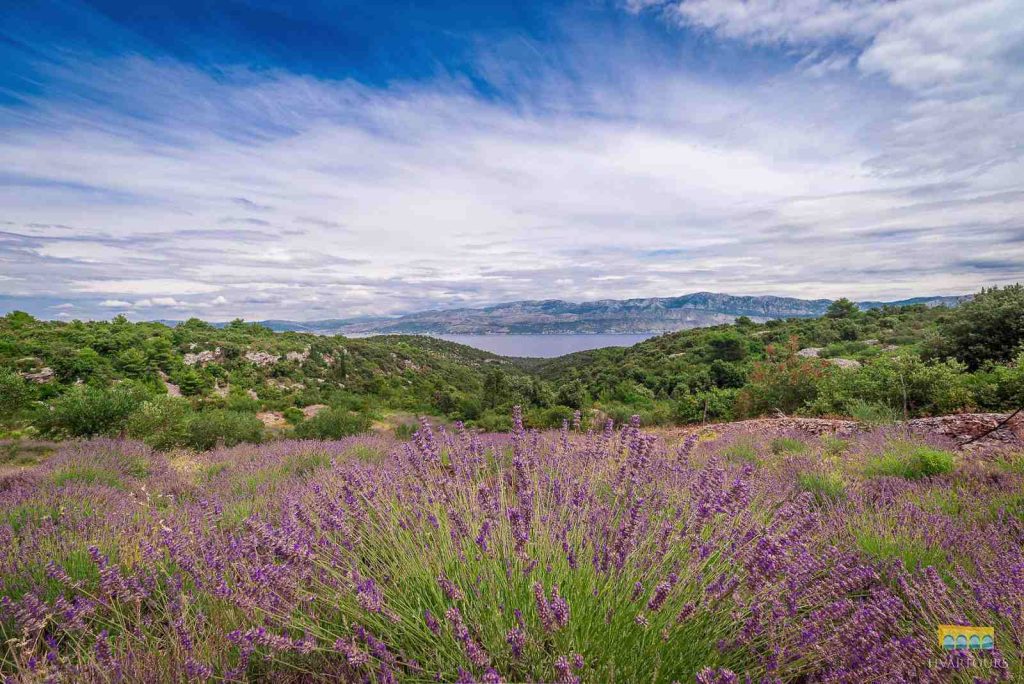
The village of Velo Grablje, once the centre of lavender production on the island, serves as an excellent starting point for exploring these fragrant fields. Visitors can embark on guided tours or self-guided walks through the countryside, learning about the traditional methods of lavender cultivation and distillation. The air is filled with the soothing scent of lavender, creating a sensory experience that is both calming and invigorating.
Beyond their aesthetic appeal, Hvar’s lavender fields play a significant role in the island’s artisanal traditions. Local producers create a variety of lavender-based products, from essential oils and soaps to culinary items like honey and ice cream. Travellers can visit small family-run distilleries to witness the oil extraction process and purchase authentic lavender souvenirs. The lavender fields of Hvar not only offer a visual feast but also provide insight into the island’s agricultural heritage and sustainable practices.
Fortica Fortress: Panoramic Views and Historical Significance
Perched high above Hvar Town, the imposing Fortica Fortress, also known as Španjola, stands as a sentinel overlooking the island and the surrounding Adriatic Sea. This 16th-century citadel, built during Venetian rule, has played a crucial role in Hvar’s defence throughout history. Today, it serves as one of the island’s most visited attractions, offering visitors a glimpse into Hvar’s turbulent past and rewarding them with unparalleled panoramic views.
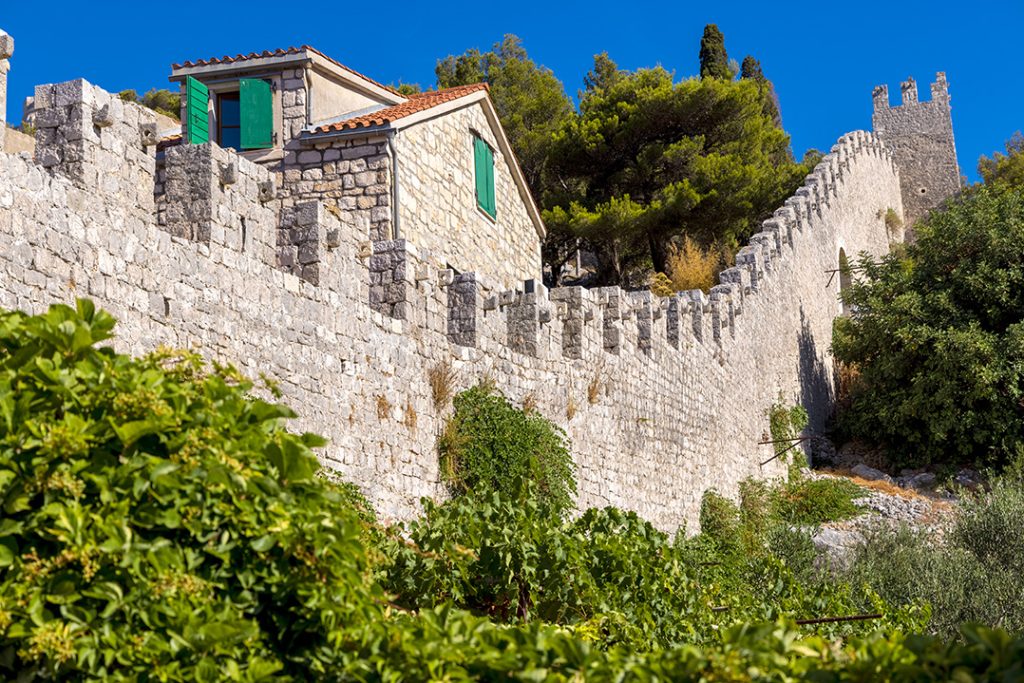
The climb to Fortica is an experience in itself, with a steep path winding through fragrant pine forests and offering increasingly spectacular vistas as one ascends. Upon reaching the fortress, visitors are greeted by well-preserved fortifications and a small museum housed within the ancient walls. The exhibits chronicle the fortress’s history and its significance in protecting Hvar from various invaders, including the Ottoman Turks.
However, the true highlight of Fortica is the breathtaking 360-degree view from its ramparts. On a clear day, visitors can see not only the red-roofed buildings of Hvar Town and its harbour but also the nearby Pakleni Islands and, in the distance, the islands of Brač and Vis. As the sun sets, the fortress becomes a popular spot for watching the sky transform into a canvas of vibrant colours, casting a golden glow over the Adriatic. Fortica Fortress offers a perfect blend of historical intrigue and natural beauty, making it an essential stop on any Hvar itinerary.
Stari Grad Plain: A UNESCO World Heritage Site
On the northern side of Hvar Island lies the Stari Grad Plain, a remarkable agricultural landscape that has remained largely unchanged since ancient Greek times. This fertile plain, stretching for about 6 kilometres, was first cultivated by Greek colonists in the 4th century BC and has been continuously farmed for over 2,400 years. In recognition of its historical and cultural significance, UNESCO inscribed the Stari Grad Plain on its World Heritage List in 2008.
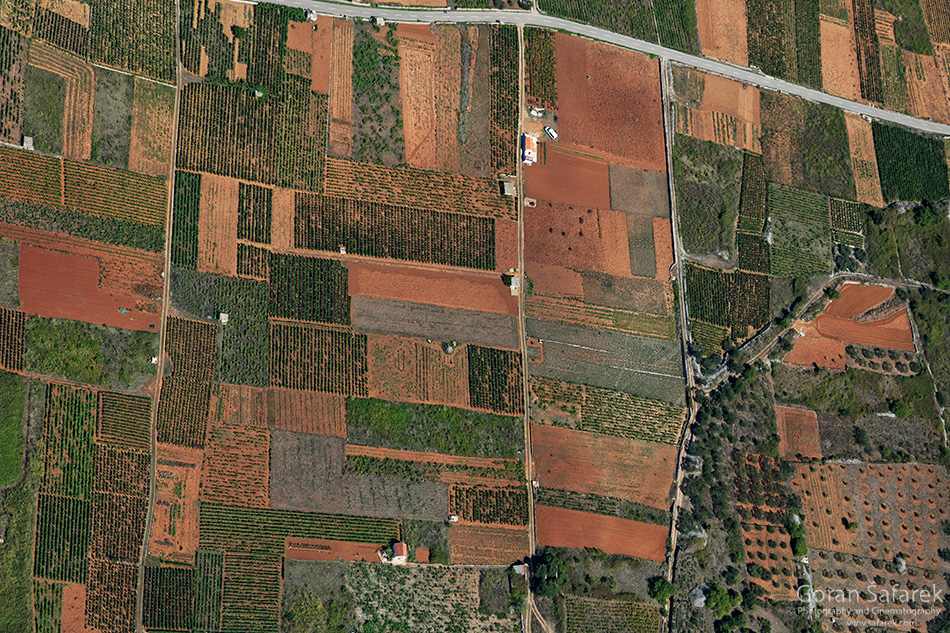
The plain is a testament to the ingenuity of ancient agricultural practices. Its distinctive feature is the geometric pattern of dry-stone walls that divide the land into parcels, known as chora. These walls serve multiple purposes: they delineate property boundaries, provide shelter from the wind, and help retain precious rainwater. Within these plots, traditional Mediterranean crops such as olives, grapes, and lavender continue to be cultivated using methods that have been passed down through generations.
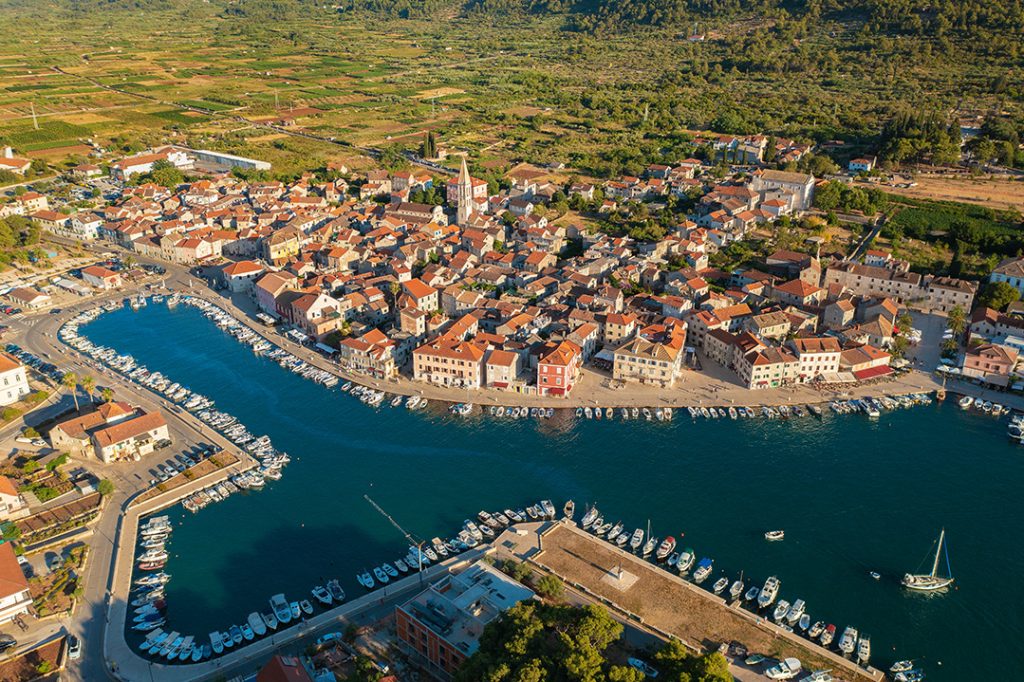
Visitors to the Stari Grad Plain can explore this living museum on foot or by bicycle, following ancient paths that wind through the fields. Along the way, they’ll encounter small stone shelters, known as trims, which were used by farmers for storage and as temporary dwellings. The plain also houses several archaeological sites, including remnants of Roman villae rusticae, which offer insight into the area’s long history of human habitation. A visit to the Stari Grad Plain provides a unique opportunity to step back in time and experience a landscape that has remained virtually unchanged for millennia.
Malo Grablje: A Ghost Town
Nestled in the hills above Hvar’s southern coast, the abandoned village of Malo Grablje stands as a haunting reminder of the island’s past. Once a thriving community known for its olive oil and wine production, Malo Grablje was gradually abandoned in the 1960s as residents moved to nearby Milna in search of better economic opportunities. Today, this ghost town offers visitors a fascinating glimpse into traditional Dalmatian village life frozen in time.
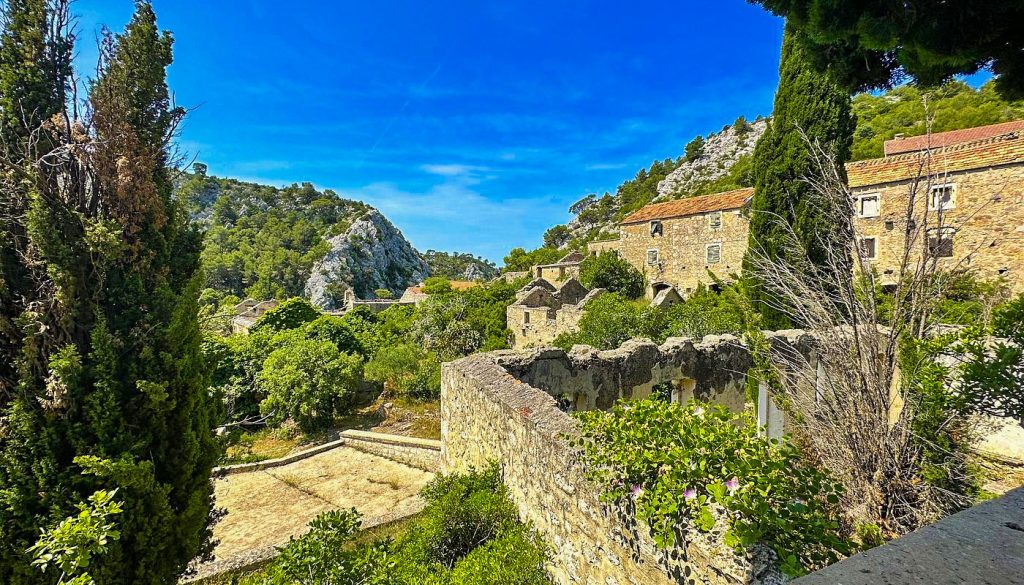
As visitors wander through the deserted streets of Malo Grablje, they’ll encounter crumbling stone houses with empty windows, overgrown courtyards, and the skeletal remains of what were once thriving households. The village’s church, dedicated to St. Nicholas, still stands as a silent sentinel over the abandoned homes. Despite its state of disrepair, Malo Grablje retains an eerie beauty, with nature slowly reclaiming the man-made structures.
In recent years, efforts have been made to breathe new life into Malo Grablje. A local entrepreneur has restored one of the old houses and converted it into a traditional konoba (tavern), where visitors can sample authentic Dalmatian cuisine made from locally sourced ingredients. This initiative not only provides a unique dining experience but also helps preserve the village’s cultural heritage. Exploring Malo Grablje offers a poignant and thought-provoking experience, allowing visitors to reflect on the island’s changing demographics and the enduring spirit of its people.
Sveta Nedjelja Beach: Avoid the Crowds
For those seeking a more secluded beach experience away from the bustling crowds, Sveta Nedjelja Beach on Hvar’s south coast is a hidden gem waiting to be discovered. This pebble beach, nestled at the foot of the island’s highest peak, St. Nicholas, offers a perfect blend of natural beauty and tranquillity. The beach’s remote location and challenging access have helped preserve its unspoiled charm, making it a favourite among locals and in-the-know travellers.
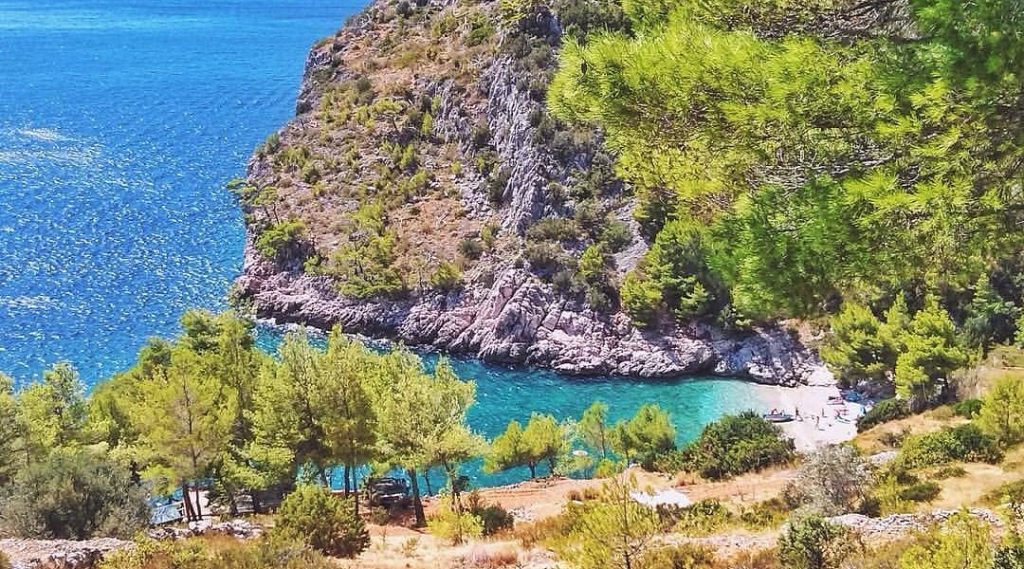
The journey to Sveta Nedjelja is an adventure in itself, involving a scenic drive along winding coastal roads followed by a short hike down a steep path. Upon arrival, visitors are rewarded with crystal-clear waters in various shades of blue, framed by towering cliffs and lush Mediterranean vegetation. The pebbly shore provides ideal conditions for sunbathing, while the calm waters are perfect for swimming and snorkelling.
One of the unique features of Sveta Nedjelja Beach is the presence of a small submarine cave, accessible to experienced swimmers. This natural wonder adds an element of excitement for those willing to explore beyond the shore. As the day progresses, the beach becomes an ideal spot for watching the sunset, with the sun dipping below the horizon and casting a warm glow over the Adriatic. For those looking to escape the more popular beaches and experience a slice of Hvar’s unspoiled coastline, Sveta Nedjelja Beach offers a serene and memorable retreat.
Pakleni Islands: Island-Hopping Adventures from Hvar
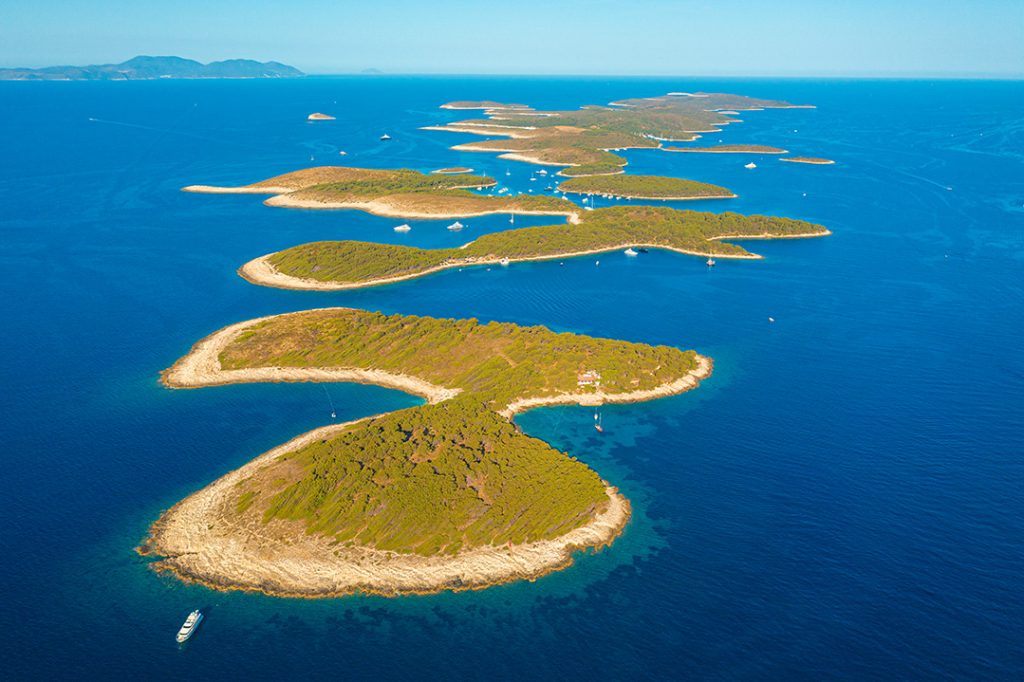
Just off the southwest coast of Hvar lies the Pakleni Islands, an archipelago of 16 small islands that offer a paradise for nature lovers and water enthusiasts. These pine-clad islets, with their hidden coves, secluded beaches, and crystal-clear waters, provide the perfect setting for a day of island-hopping adventures. The name “Pakleni” is often mistranslated as “Hell’s Islands,” but it actually derives from “paklina,” a type of pine resin once used to waterproof boats.
The largest and most visited of the Pakleni Islands is Sveti Klement, home to the picturesque Palmižana Bay. Here, visitors can find a marina, several restaurants, and art galleries nestled among exotic plants and pine forests. The bay’s clear waters and pebbly beaches make it an ideal spot for swimming and sunbathing. For those seeking more seclusion, the southern side of Sveti Klement offers several hidden coves accessible only by boat or on foot.
Other notable islands in the archipelago include Marinkovac, known for its party beach Carpe Diem, and Jerolim, a favourite among naturists. Visitors can explore these islands by renting a small boat, joining a guided tour, or taking a water taxi from Hvar Town. Whether one chooses to spend the day beach-hopping, snorkelling in secluded bays, or enjoying a leisurely lunch at a seaside konoba, the Pakleni Islands offer a diverse range of experiences that showcase the natural beauty of the Adriatic.
Vrboska: Little Venice
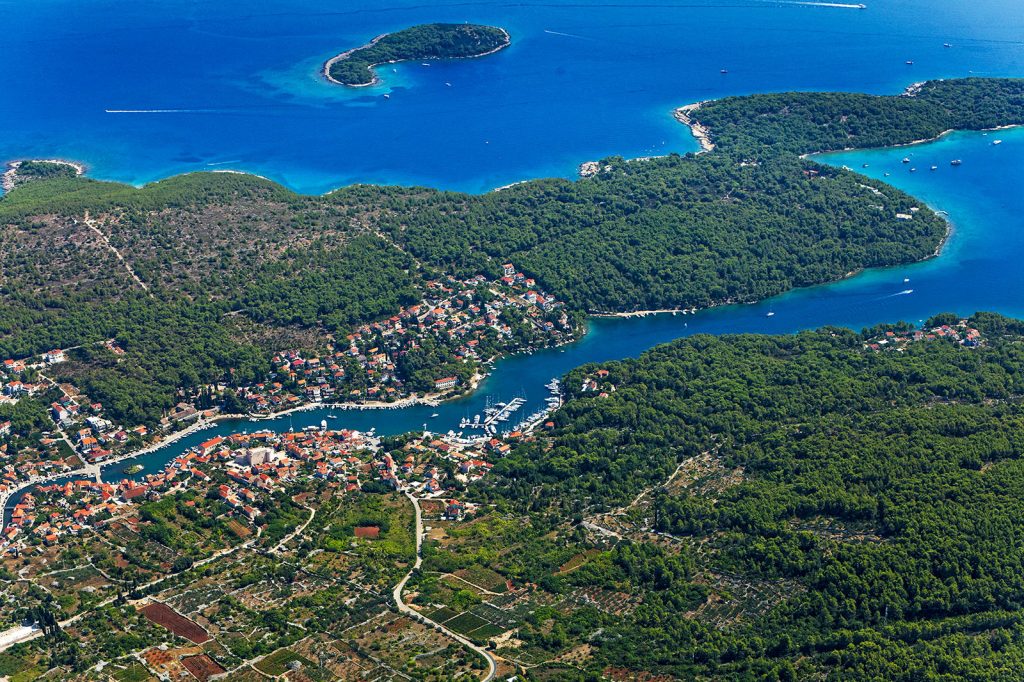
Tucked away on Hvar’s northern coast, the charming village of Vrboska is often referred to as “Little Venice” due to its picturesque canals and bridges. This small fishing village, nestled at the end of a long, narrow bay, offers visitors a tranquil escape from the more bustling areas of the island. Vrboska’s unique blend of Venetian and Mediterranean architecture, combined with its laid-back atmosphere, makes it a must-visit destination for those seeking to experience Hvar’s authentic coastal charm.
As visitors stroll along Vrboska’s waterfront, they’ll encounter a series of small stone bridges spanning the canal, each offering a different perspective of the village’s colourful facades and reflections in the calm waters. The village’s centrepiece is the fortified Church of St. Mary of Mercy, a unique structure that combines elements of a church and a fortress, testament to the village’s turbulent history and need for protection from pirate raids.
Vrboska is also home to a rich maritime heritage, which is celebrated at the Fishing Museum housed in a restored 17th-century Baroque palace. Here, visitors can learn about traditional fishing methods and the importance of the sea to local culture. The village’s small marina is a hub of activity, with fishing boats and yachts adding to the picturesque scene. For those looking to experience Hvar’s gastronomic delights, Vrboska offers several excellent konobas serving fresh seafood and local specialities, allowing visitors to savour the flavours of the Adriatic in an idyllic setting.
Jelsa Town: Laid-Back Vibe
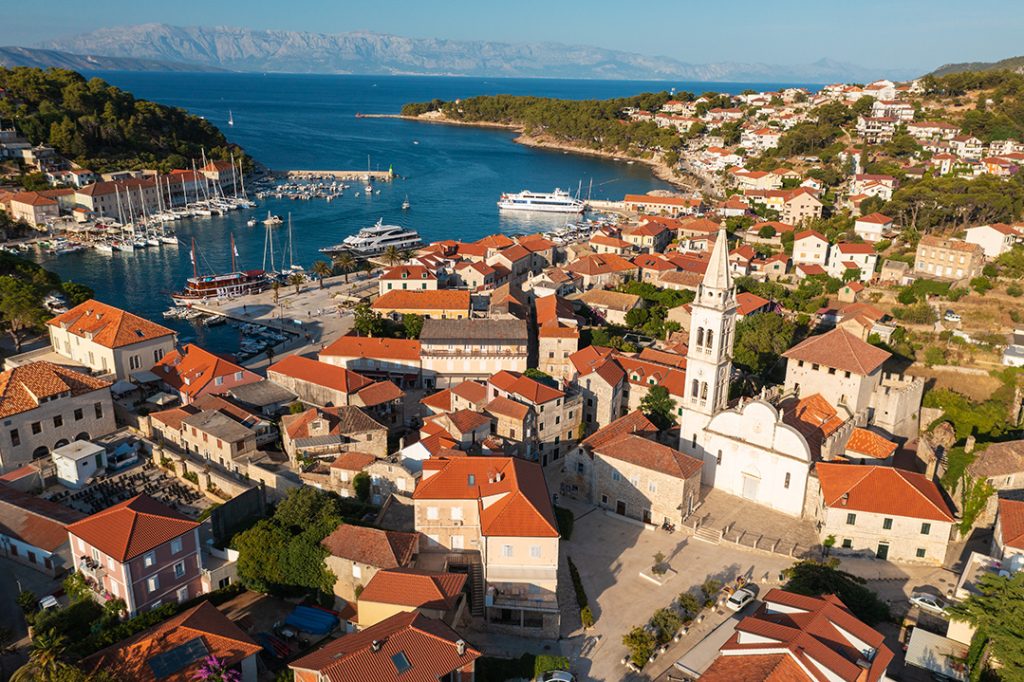
Nestled on the northern coast of Hvar, Jelsa Town presents a refreshing contrast to the more bustling areas of the island. This charming port town, with its laid-back atmosphere and authentic Dalmatian character, offers visitors a glimpse into the slower pace of island life. Jelsa’s rich history, dating back to ancient times, is evident in its well-preserved architecture and cultural landmarks, making it an ideal destination for those seeking a blend of relaxation and cultural exploration.
The heart of Jelsa is its picturesque main square, Pjaca, surrounded by elegant stone houses and dominated by the Church of St. John. This vibrant space serves as the town’s social hub, where locals and visitors alike gather to enjoy coffee at outdoor cafes or browse the weekly market. The nearby park, with its towering pine trees and children’s playground, provides a cool respite on hot summer days.
Jelsa’s seafront promenade, lined with palm trees and benches, invites leisurely strolls and offers stunning views of the bay and nearby islands. The town’s small beaches, such as Mina and Grebisce, provide opportunities for swimming and sunbathing in a more relaxed setting compared to the island’s more popular coastal spots. For wine enthusiasts, Jelsa and its surrounding area are known for their excellent vineyards, producing some of Croatia’s finest wines. Visitors can explore local wineries, sample regional varietals, and learn about the island’s long-standing winemaking traditions, adding a delightful dimension to their Hvar experience.
Practical Tips for Your Hvar Holiday: When to Visit and How to Get Around
When planning a trip to Hvar, timing is crucial to ensure the best possible experience. The island enjoys a Mediterranean climate with mild winters and hot summers, making it a year-round destination. However, the peak tourist season runs from June to September, when the weather is warmest and most activities are in full swing. For those seeking a balance between good weather and fewer crowds, the shoulder seasons of May and October can be ideal, offering pleasant temperatures and a more relaxed atmosphere.
Getting to Hvar involves taking a ferry or catamaran from Split or other nearby coastal cities. Once on the island, visitors have several options for getting around:
- Public buses connect major towns and villages, offering an economical way to explore.
- Renting a car or scooter provides flexibility for discovering remote beaches and inland attractions.
- Taxis are available but can be expensive for longer journeys.
- Water taxis and boat rentals are popular for exploring the coastline and nearby islands.
To make the most of your Hvar holiday, consider these additional tips:
- Book accommodation in advance, especially during peak season.
- Bring comfortable walking shoes for exploring towns and hiking trails.
- Pack sun protection, as Hvar’s sunny climate can be intense.
- Try local specialities like Hvarska gregada (fish stew) and Prošek (sweet dessert wine).
- Respect local customs and dress codes, particularly when visiting churches and other religious sites.
Ready to experience the wonders of Hvar Island? Start planning your Croatian adventure today! Book your ferry tickets, reserve your accommodation, and prepare for an unforgettable journey through this Adriatic paradise. Don’t miss out on the opportunity to create lasting memories in one of Europe’s most captivating destinations. Your Hvar holiday awaits!
